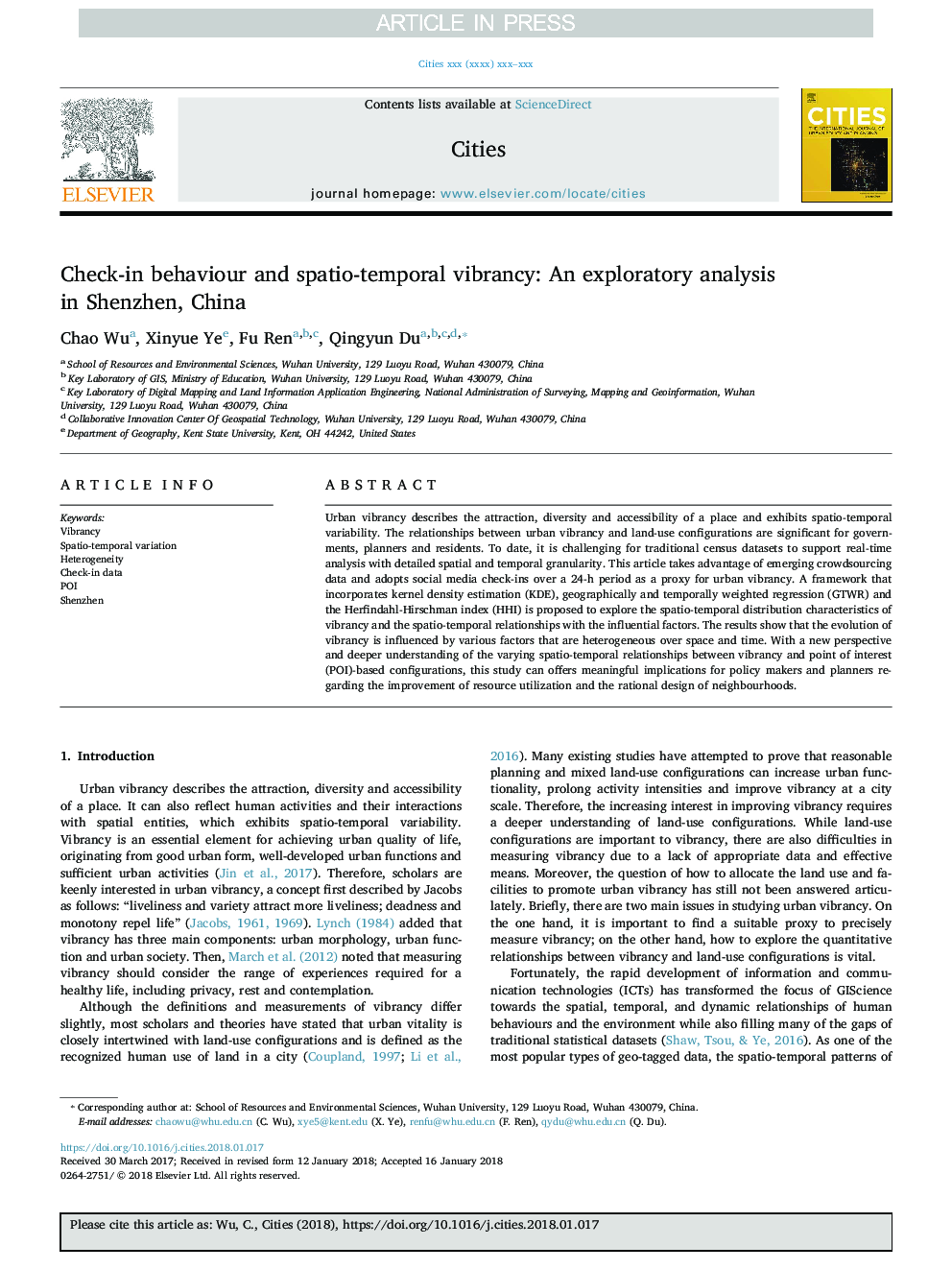| Article ID | Journal | Published Year | Pages | File Type |
|---|---|---|---|---|
| 7417354 | Cities | 2018 | 13 Pages |
Abstract
Urban vibrancy describes the attraction, diversity and accessibility of a place and exhibits spatio-temporal variability. The relationships between urban vibrancy and land-use configurations are significant for governments, planners and residents. To date, it is challenging for traditional census datasets to support real-time analysis with detailed spatial and temporal granularity. This article takes advantage of emerging crowdsourcing data and adopts social media check-ins over a 24-h period as a proxy for urban vibrancy. A framework that incorporates kernel density estimation (KDE), geographically and temporally weighted regression (GTWR) and the Herfindahl-Hirschman index (HHI) is proposed to explore the spatio-temporal distribution characteristics of vibrancy and the spatio-temporal relationships with the influential factors. The results show that the evolution of vibrancy is influenced by various factors that are heterogeneous over space and time. With a new perspective and deeper understanding of the varying spatio-temporal relationships between vibrancy and point of interest (POI)-based configurations, this study can offers meaningful implications for policy makers and planners regarding the improvement of resource utilization and the rational design of neighbourhoods.
Related Topics
Social Sciences and Humanities
Business, Management and Accounting
Tourism, Leisure and Hospitality Management
Authors
Chao Wu, Xinyue Ye, Fu Ren, Qingyun Du,
